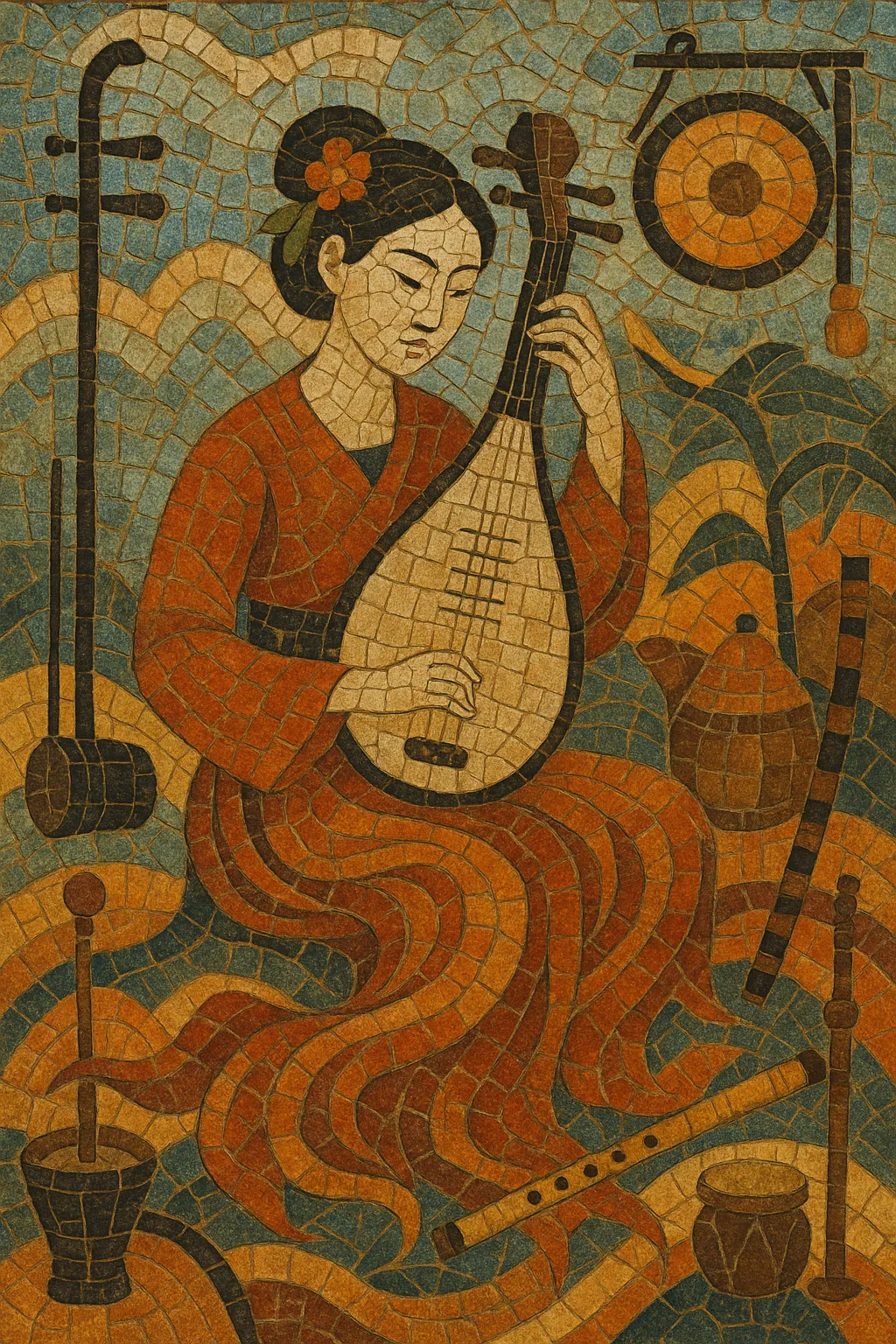Chinese folk music refers to the orally transmitted song, dance, and instrumental traditions of the many peoples living within China. It encompasses the Han majority as well as a vast range of ethnic minorities, resulting in exceptional regional variety in language, timbre, rhythm, and repertoire.
Core musical traits include pentatonic (five-note) modal systems (gong, shang, jue, zhi, yu), flexible and speech-like rhythms, and heterophonic textures in which multiple performers ornament the same melody differently at the same time. Typical instruments include plucked zithers and lutes (guzheng, pipa, ruan), bowed fiddles (erhu and regional huqin), flutes and double reeds (dizi, xiao, suona), free-reed mouth organs (sheng), and an array of gongs, drums, and clappers.
Vocal styles range from unaccompanied mountain songs (shan'ge) and work songs to narrative ballads and festival pieces. Themes often celebrate nature, courtship, migration, labor, local history, and ritual life, with performance contexts spanning marketplaces, weddings, harvests, temple fairs, and staged folk ensembles.
Chinese folk music predates written history, with ritual songs and dances documented in Zhou sources and a rich corpus of village repertoire. During the Han dynasty, the imperial Music Bureau (Yuefu) collected local folk songs, preserving regional melodies and topics such as love, labor, and frontier life. Silk Road exchange introduced instruments (e.g., pipa, sheng variants) and melodic turns that filtered into local genres.
From the Song era onward, urban life and printing helped spread popular tunes; poetic song forms (ci, qu) and narrative genres borrowed folk melodies. In subsequent centuries, local theatrical styles and instrumental ensembles (e.g., silk-and-bamboo sizhu) crystallized from folk practice. Migration and market expansion diversified timbres and repertoires, while temple fairs and seasonal festivals sustained performance traditions.
Republican-era scholars and musicians began systematic fieldwork, while conservatories started arranging folk pieces for modern ensembles. After 1949, large-scale documentation projects and staged folk troupes professionalized local styles. Mass and “red” songs adapted folk modality for participatory singing. Political campaigns sometimes narrowed expressive range, yet many regional idioms survived through state ensembles, radio, and recordings.
Post-1978, cultural policy and media industries fostered revival and innovation. Conservatory-trained soloists (erhu, pipa, dizi) and national orchestras popularized arranged folk classics, while minority traditions (e.g., Xinjiang Muqam, Mongolian long-song) gained visibility. In the 2000s–2020s, pop and indie scenes (e.g., Zhongguo Feng) recontextualized folk scales and instruments; digital archives and festivals aided preservation. Today, Chinese folk music thrives across community rituals, stage presentations, and cross-genre collaborations.


